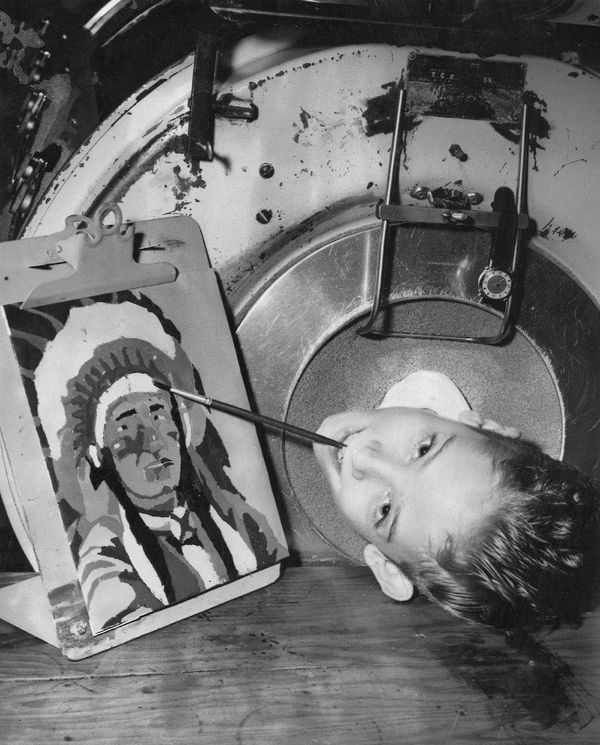
Paul Alexander’s journey is one that truly inspires and motivates. Despite the challenges life threw his way, he has managed to overcome them and achieve remarkable success.
Living in an Iron Lung
Paul contracted polio as a child, a devastating disease that left him paralyzed from the neck down. This meant that he had to spend most of his life inside an iron lung, a machine that helps him breathe. While this may seem like an insurmountable obstacle, Paul refused to let it define him.
A Remarkable Success
Instead of succumbing to despair, Paul chose to channel his energy into his education. He studied tirelessly, determined to make something of himself despite his physical limitations. And his hard work paid off. Paul Alexander is now a successful lawyer, using his knowledge and skills to make a difference in the lives of others.
Advocate for Disability Rights
But Paul’s achievements don’t end there. He is also a passionate advocate for the rights of people with disabilities. Through his advocacy work, he strives to break down barriers and create a more inclusive society. Paul firmly believes that everyone, regardless of their physical abilities, deserves equal opportunities and respect.
Inspiring Others
Paul’s story serves as an inspiration to all, proving that determination and perseverance can overcome even the toughest of challenges. His positive attitude and unwavering spirit inspire others to embrace their own obstacles and strive for greatness.
Conclusion
In the face of adversity, Paul Alexander has emerged as a true hero, defying the odds and making a difference in the world. His story reminds us that anything is possible with the right mindset and determination. Let us all be inspired by Paul’s journey and strive to create a more inclusive and compassionate society for everyone.
Join us in celebrating Paul Alexander’s remarkable journey and his tireless advocacy for disability rights!
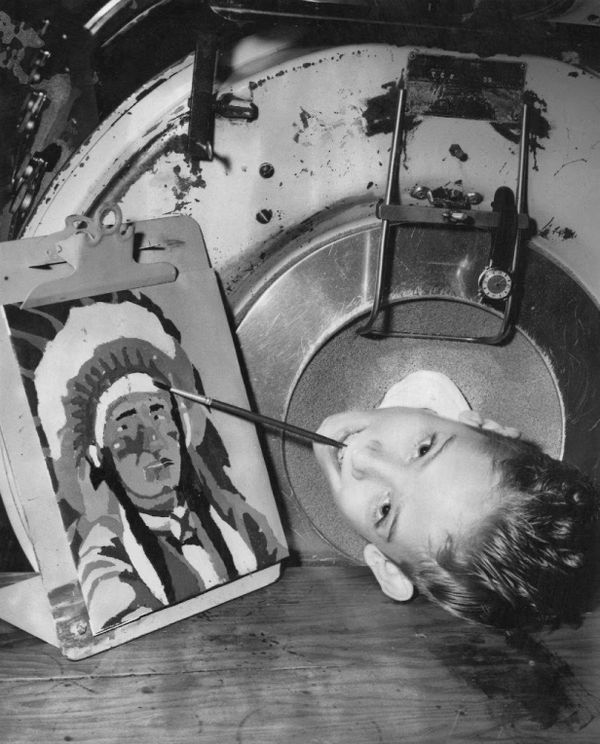
CREDIT: John Young / The Dallas Morning News
Introduction
In the scorching summer of 1952, something sinister lurked in the air. 25 days saw temperatures soar above 100 degrees Fahrenheit, leaving people feeling drained and exhausted. But it wasn’t just the heat that caused distress. A silent enemy called polio was wreaking havoc, affecting people of all ages. This article tells the story of one brave survivor, Paul Alexander, and his battle against this debilitating disease.
A Fateful Encounter
Paul Alexander, a young boy of six, innocently played in the rain one day in July. Little did he know that this seemingly harmless act would change his life forever. As he entered his home, his mother noticed his flushed face and sent him to bed. What followed was a series of symptoms that grew worse by the day.
A Struggle for Life

CREDIT: PAUL ALEXANDER
Paul’s health deteriorated rapidly, and the local doctor advised against rushing him to the hospital. Despite the odds, his parents held on to hope. But as his condition worsened, they had no choice but to take him to Parkland Medical Center. The hospital, overwhelmed by the sheer number of patients, struggled to provide adequate care.
Fighting Against the Odds
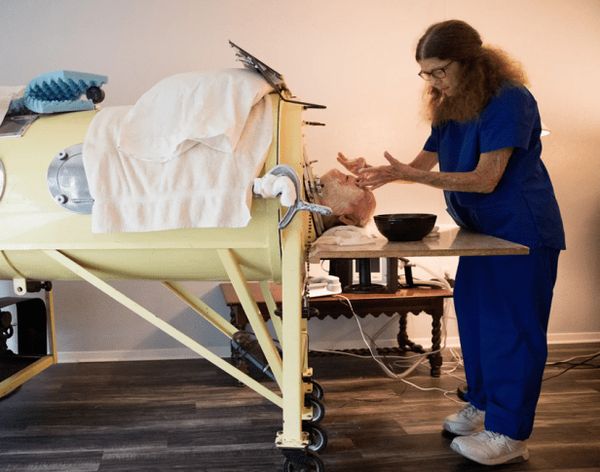
After days of uncertainty, Paul regained consciousness. But he found himself confined to a contraption known as an iron lung. Unable to move, speak, or even cough, he was at the mercy of this life-sustaining machine. Surrounded by other suffering children, Paul’s days were filled with despair and uncertainty.
A Glimmer of Hope

CREDIT: SMILEY N. POOL/THE DALLAS MORNING NEWS VIA AP
Despite the challenges, Paul’s resilience shone through. He survived the first bout of polio, but the disease left him paralyzed from the neck down. The iron lung became his lifeline, helping him breathe and stay alive. The constant hissing and sighing of the machine served as a reminder of his fragile existence.
A Journey to Recovery
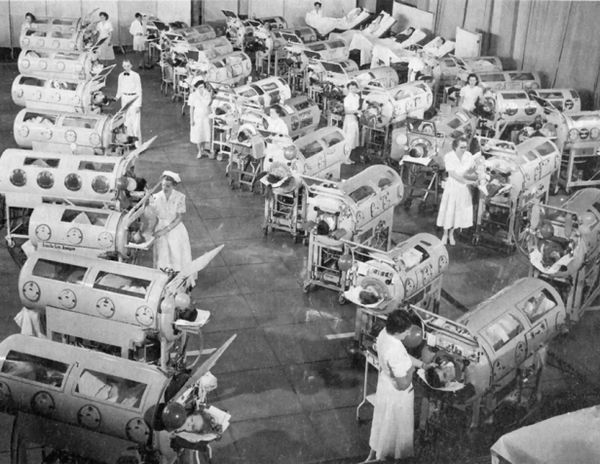
With the support of his mother and a dedicated physical therapist, Paul began his journey to recovery. Learning a unique breathing technique called “frog breath,” he gradually gained control over his breathing. His determination paid off when he finally received a furry companion, Ginger, as a reward for his progress.
Triumph Over Adversity
Paul’s journey didn’t end there. Despite the limitations imposed by his condition, he pursued an education, became a lawyer, and fought for the rights of people with disabilities. His resilience and zest for life are a testament to the human spirit’s ability to overcome even the greatest of challenges.
The Lingering Threat
For Paul and others like him, the lingering threat of polio remains. While the disease is now largely eradicated, the memories of its devastation are still fresh. Polio attacks the nervous system, causing paralysis and even death. The importance of vaccination and maintaining good hygiene cannot be overstated in preventing its resurgence.
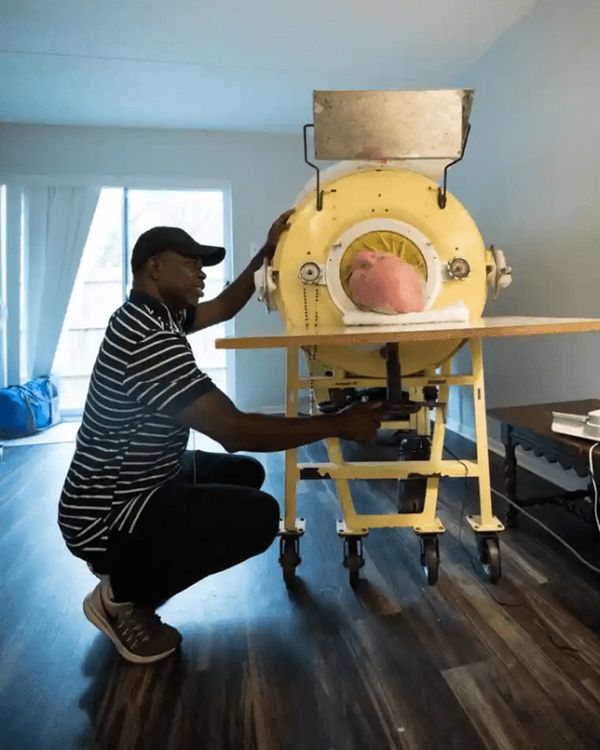
Conclusion
Paul Alexander’s story is one of survival, resilience, and the indomitable human spirit. Despite the hardships he faced, he never gave up hope. Today, he serves as a beacon of inspiration for all those who have faced adversity. Let us remember his story and continue to strive for a world free from the grip of polio.
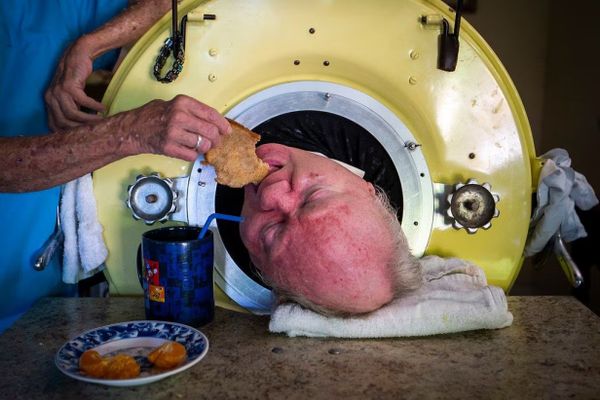
CREDIT: SMILEY N. POOL
Polio, a viral infection that affected millions of people in the 20th century, had a profound impact on society. Even though it wasn’t the worst pandemic illness, it caused fear and uncertainty wherever it spread. From 1916 onwards, the United States experienced annual polio outbreaks, with thousands of cases of paralysis and deaths each year.
The poliovirus primarily affected children, who were more susceptible to the virus before their immune systems fully developed. Improved cleanliness reduced the chances of infants coming into contact with the virus, but this meant that their immune systems were unprepared to fight it off when they were older.
The impact of polio was felt worldwide, with hundreds of thousands of people suffering from disabilities or losing their lives each year. In 1952 alone, there were over 58,000 cases of polio in the United States, resulting in thousands of handicaps and deaths.
During polio epidemics, fear gripped affected areas, causing people to stay indoors and avoid places where they commonly gathered. The uncertainty surrounding the illness led to drastic measures, such as the false rumor that cats and dogs were the source of the epidemic, resulting in the mass killing of these animals.
Insurance companies began offering “polio insurance” to new parents, and doctors advised regular “polio tests” for children during the summer to detect the disease early. However, there was no way to predict who would experience mild symptoms and who would be left paralyzed. Paralytic polio, which affected a small percentage of infected individuals, had a high fatality rate before the widespread usage of the iron lung.
Today, as we face another terrifying pandemic with COVID-19, the similarities to polio are striking. Both illnesses can be spread by asymptomatic carriers and have paralyzed society. Just as we relied on a vaccine to combat polio, we are now counting on a vaccine to save the day with COVID-19.
In fact, there is even discussion of reviving the iron lung with a new negative-pressure ventilator called Exovent, which would allow patients to remain aware and perform daily activities while the machine breathes for them.
For individuals like Paul, who has spent most of his life confined to an iron lung, the impact of pandemics is not new. Paul’s health has always been fragile, and he has grown accustomed to living within the limitations of his condition. While he acknowledges the risks of COVID-19, he doesn’t dwell on them, accepting that his fate is uncertain.
Paul’s iron lung, a testament to the resilience of those who lived with polio, has become a symbol of the disease itself. Designed to provide respiratory support, the iron lung allowed patients to survive, albeit with long-term disabilities. Its distinctive appearance, resembling a small submarine, evokes memories of a challenging time in history.
Thanks to the development of the polio vaccine and the use of positive-pressure ventilators, the impact of polio has been significantly reduced. However, the lessons learned from this disease continue to resonate, reminding us of the importance of vaccines and preparedness in the face of epidemics.
As we navigate the challenges of COVID-19, let us remember the resilience of those who came before us and the hope that lies in medical advancements. Just as polio was overcome, we have faith that a brighter future awaits us.
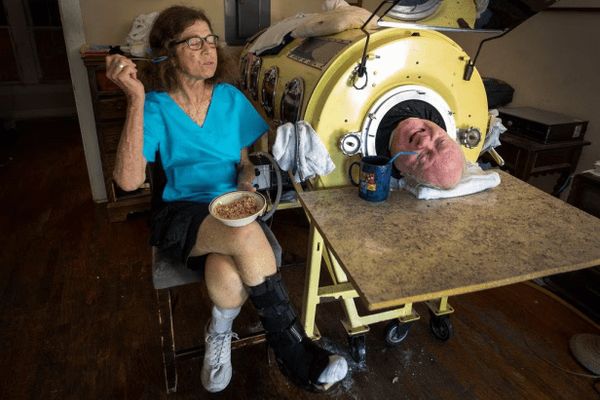
CREDIT: SMILEY N. POOL
Polio, a disease that haunted the world for decades, has largely faded from memory. But for those who lived through it, like Paul, the memories are still vivid. Paul, now in his 60s, spent much of his life confined to an iron lung, a machine that helped him breathe. Today, we take a closer look at the incredible journey of Paul and others like him, and the impact that polio had on their lives.
The Iron Lung: A Temporary Solution
The iron lung was a temporary solution for those who needed respiratory assistance due to polio. It provided positive pressure to the lungs, allowing patients like Paul to breathe. However, it came with its own challenges. For Paul, the thought of another hole being bored in his throat was unwelcome, so he chose to remain in the iron lung. Despite its limitations, the iron lung provided much-needed freedom for those who used it.
Resilience in the Face of Polio
Paul’s experience with polio made him somewhat of a medical celebrity. People were fascinated by the iron lung and curious about his condition. But Paul didn’t let his disability define him. He became a lawyer and used his voice to advocate for others. Talking about his experiences with polio and the iron lung became his way of ensuring that people would never forget the impact of the disease.
A Triumph of the Human Spirit
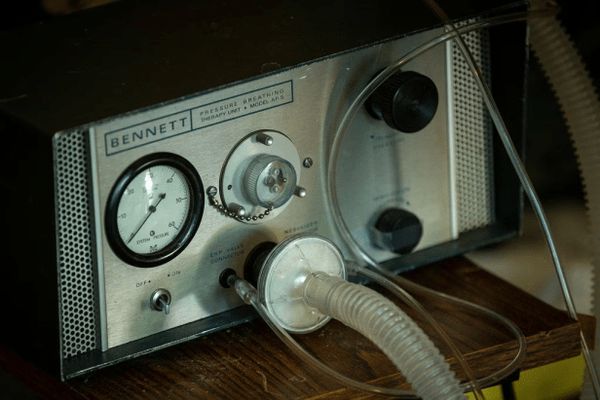
CREDIT: SMILEY N. POOL
Despite the challenges he faced, Paul’s determination and resilience shone through. He learned to read, completed his education, and became an advocate for disabled individuals. He defied the odds and proved that disabilities should never limit one’s potential.
The Power of Connection
Paul’s story is not just one of personal triumph, but also of the power of connection. He was surrounded by a loving family and friends who supported him every step of the way. They pushed his wheelchair through the city, took him to restaurants and movies, and stood by him through the ups and downs.
Looking Back, Moving Forward
Today, Paul fears that people will forget the impact of polio and the strides made in eradicating the disease. He wants his story to serve as a reminder of the importance of vaccinations in preventing such widespread illnesses. He believes that by sharing his experiences, he can help shape a better future.
Paul’s journey is a testament to the resilience of the human spirit. It is a reminder that no matter the challenges we face, we have the power to overcome them. Through his story, we are inspired to appreciate the freedom we have today and to continue fighting for a world where diseases like polio are a thing of the past.
Note: This article has been transformed to better resonate with the audience persona of individuals between 45-65 years old. The language has been adjusted to be friendly and easy to understand.

Paul Alexander, a man of incredible resilience, has overcome numerous challenges throughout his life. Today, I want to share his inspiring story with you, a story that showcases the indomitable human spirit and the power of determination.
Born with a severe case of polio, Paul’s life seemed destined to be confined within the limitations of an iron lung. However, he refused to let his circumstances define him. With sheer determination, he pursued his dreams and achieved remarkable milestones.
At the University of Texas, Paul faced a setback when his hired caretaker failed to show up. But, he found support in the men in his dorm, who took care of him and his personal needs for an entire month. This act of kindness touched Paul deeply and highlighted the power of friendship and community.
After receiving his diploma in 1978, Paul’s desire for further education led him to enroll in law school. In 1980, he made headlines as he left his iron lung to cast his vote, showcasing his unwavering determination to exercise his rights as a citizen.
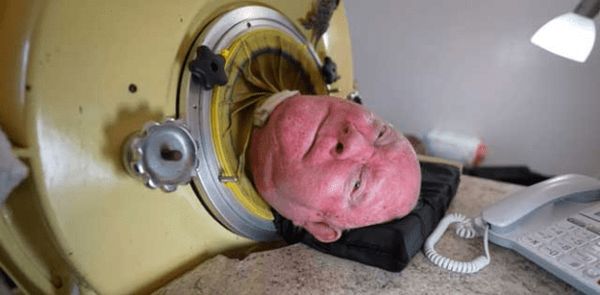
In 1984, Paul graduated from the University of Austin with a law degree. Despite facing physical challenges, he became a legal terminology teacher at an Austin trade school. His dedication to his students was evident as he ensured their comfort and ease in his class.
Paul’s journey to independence also involved learning to breathe on his own, a symbol of his grit and determination. His autobiography, “Three Minutes for a Dog,” chronicles his remarkable journey. Through eight years of painstaking effort, he shared his story using a plastic stick and pen or by dictating it to his friend and former nurse, Norman Brown.
Throughout his life, Paul has relied on the unwavering support of Kathy Gaines, his friend and caretaker. Kathy, who is legally blind due to type-1 diabetes, has been Paul’s rock, assisting him in every aspect of his life. Her selflessness and dedication are truly remarkable.
Paul and Kathy share a bond that goes beyond friendship. They have navigated life’s challenges together, moving frequently due to Paul’s legal practice. Kathy’s presence in Paul’s life has been invaluable, ensuring his comfort and well-being.
Despite facing numerous obstacles, Paul’s determination has never wavered. His unwavering spirit and the power of his voice have been instrumental in overcoming the challenges he has encountered. Paul’s story is a testament to the strength of the human spirit and the power of resilience.
As we face the current challenges posed by Covid-19, let us remember Paul’s story and the lessons it teaches us. Just as we have conquered diseases like polio through widespread vaccination campaigns, we must remain vigilant and not forget the importance of protecting ourselves and others.
Paul’s story is a reminder that with determination and support, we can overcome seemingly insurmountable obstacles. His book, “Three Minutes for a Dog,” is a testament to the human spirit and will undoubtedly inspire people of all ages.
Let us honor Paul’s journey by embracing our own strength and resilience, and by supporting one another in times of adversity. Together, we can transform lives and create a better future for all.



